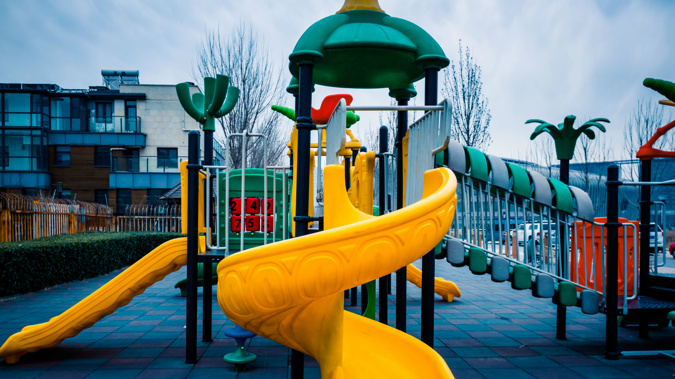
The Ministry for Regulation investigated playground equipment standards, including if regulations were “needlessly restrictive” after a concerned parent wrote to regulation minister David Seymour about a closed-down slide.
A Regulatory Response Issue stated Seymour’s objective was to “make playgrounds available by removing needlessly restrictive regulations, while keeping logical safety precautions in place”.
A parent wrote to Seymour’s office about the closure of a slide in a playground in Rotorua, sparking a closer look at the standards.
Rotorua Lakes Council, which oversaw the slide in question, said it supported the ministry’s assessment of the case.
The slide which prompted the red-tape probe was deemed “unsafe” after a vandalism event at the Rotorua lakefront playground in April 2024.
Rotorua Lakes Council group manager for community experience Alex Wilson said the slide had to be isolated from the rest of the playground with hazard tape.
While welding repairs were attempted, they only lasted “a few weeks” and a replacement was sought, but due to supply chain challenges from Germany, the delivery of the slide took longer than expected.
“To keep everyone safe, only the area around the broken slide was fenced off, while the rest of the playground remained open for use,” Wilson said.
The regulation agency’s reporting noted New Zealand has a voluntary safety standard for playground construction, and found some councils require playground comply with the standard through planning policies, district plans and risk management.
The Rotorua Lakes Council was also engaged, with the document confirming the council’s preference to purchase from local suppliers but finding low availability upon enquiry.
The ministry found significant variance with councils’ voluntary compliance with the standard, which it stated aims to balance safety with play value, inclusivity and developmental benefits.
“The New Zealand standard is less restrictive than the American or Chinese standards as it allows for greater leeway in interpretation and creativity in playground design,” the Ministry noted in its regulatory response issue.
It was concluded the standard was not creating any material barriers to playground availability and appeared to be regarded as best practice.
“From our research and limited engagement, we consider the Standard is effectively balancing safety, risk and accessibility.”
The availability of playgrounds in New Zealand was favourable compared to other nations, with approximately 3,500 playgrounds in the country making up an average of around 267 children per playground.
England has about 300 children per playground, and Australia has about 500, according to the agency’s research.
“Based on this analysis, the Ministry does not consider that there is a clear problem with the regulation of playgrounds and therefore recommends that no further work is undertaken,” the document stated.
In a statement, Seymour said “no problem is too big or too small” for the agency.
“I’m pleased that while they tackle big red tape, they also offer fast fixes to problems like a council that was wrongly keeping their playground closed.”
Azaria Howell is a multimedia reporter working from Parliament’s press gallery. She joined NZME in 2022 and became a Newstalk ZB political reporter in late 2024, with a keen interest in public service agency reform and government spending.
Take your Radio, Podcasts and Music with you









